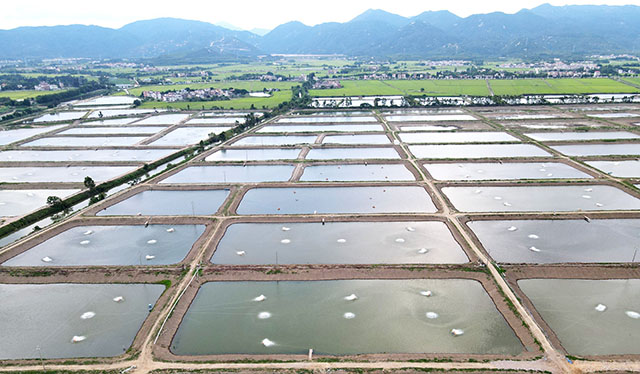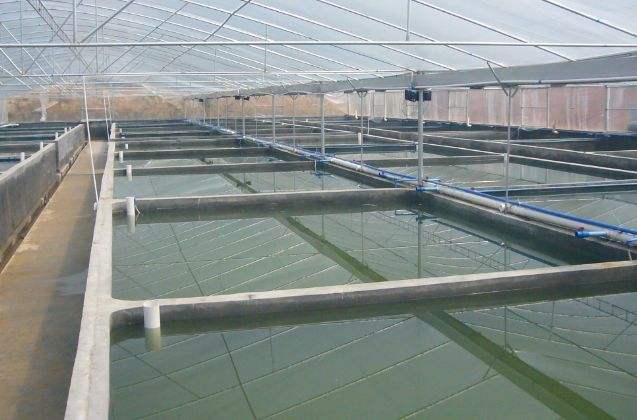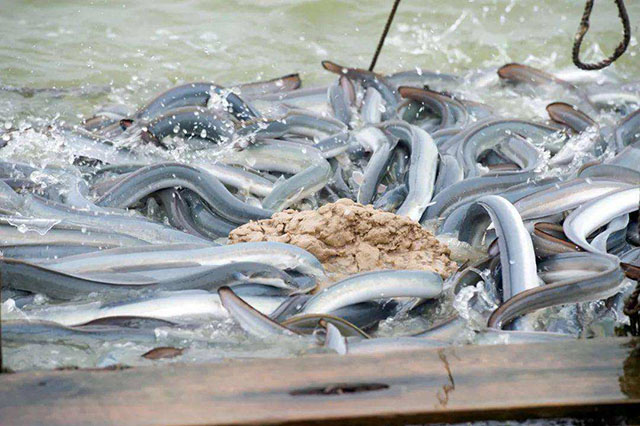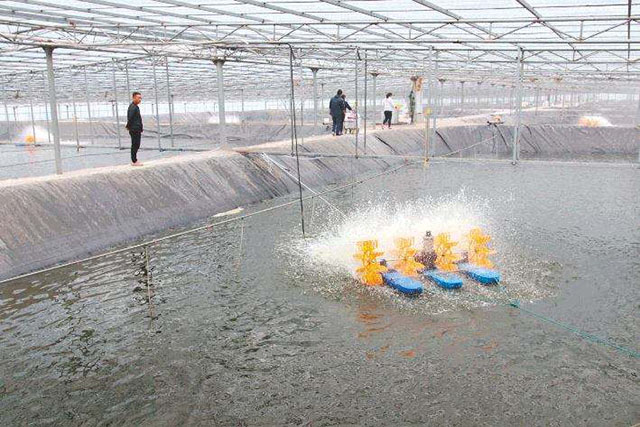In the past three or four years, the price of Japanese eel is relatively high, so some farmers join the team to raise eel. So what's the secret of eel farming? Recently, the reporter learned that the eel farmer Wu Gongquan in Shawan Town, Panyu District, Guangzhou city, Guangdong Province, has a yield of 1000 Kg per mu, with an output value of more than 100,000 YUAN per mu, so he went to find out.

Eels are relatively pure aquatic creatures in the world and like to live in clean and pollution-free waters. Therefore, water quality plays a crucial role in the breeding process.
Wu Gongquan farm is located in Sanshan village, Shawan Town, adjacent to shawan waterway. Shawan Waterway is a drinking water source protection zone of Guangzhou city, and physical isolation Seine facilities were built at the end of 2013. In recent years, the environmental protection department has taken a number of measures, 24-hour monitoring, to ensure water quality, so that the water quality of Shawan waterway in the class ⅱ water standard, to meet the requirements of safe drinking water.
With the advantage of proximity, Wu Gongquan's aquaculture farm directly draws river water from the waterway as aquaculture water, laying a solid foundation for the success of eel farming.

Of course, good water also needs to be treated. Before stocking, the water used for breeding needs to be disinfected. Bleaching powder containing 30% effective chlorine is sprinkled on the whole pond for disinfection, and then the water body is treated with trichlorfon for fishing. During the breeding period, it is still necessary to do a good job in water quality management, so that the pH value of water is always maintained between 7.8 and 8.0. The first approach is to change the water.
When the water quality is abnormal and the concentration of nitrite and ammonia nitrogen is high, the drainage and irrigation are needed to change the water, and the water change is 30~50cm deep. The second is to use water regulating agent, generally use nitroling to reduce the concentration of ammonia nitrogen, increase the beneficial microorganisms in the water, so as to achieve the purpose of purifying water quality and maintaining the aquaculture water environment.
Eel seedlings are usually bought in January. Wu told reporters that the newly bought eel larvae, as thin as toothpicks, would be difficult to feed in an outdoor pond. He often sends the eels he buys to a nearby breeding company for indoor breeding.
It is reported that these aquaculture companies are factory farming, with relatively advanced machinery and electronic equipment to control the temperature, dissolved oxygen and pH value of the aquaculture water, the aquaculture team also has professional technical personnel, more sophisticated and professional cultivation of eel seedlings. The input of subculture is 18~20 yuan per tail, and the breeding period is 2 months. Wu Gongquan thinks, from breeding effect, such investment is worth.
At the end of the two-month breeding period, the eel seedlings had grown to 150 fish/kg and could be cultured in the pond. First mark coarse, stocking density is 10 ~ 20 thousand eel/mu, after 45 days of breeding, eel specifications grow to 40~50 eel/kg, at this time, pond distribution, stocking density is 3000 eel/mu.
It is worth noting that the water should be tested before seeding. More than 10 eels were first put into the pond, and the fry condition was observed in detail. After 1 to 2 days, if there was no damage to the fish body and no increase in intestinal mucus, the fish could be thrown into the fry on a large scale.
Feeding should be fixed in order to observe the eel feeding situation. Feed 1~2 times a day, morning and evening. Fish meal and eel feed were the main feedings. Before dividing the pond, feed 5 to 8 jin of eels with 100 jin of young seedlings; After dividing pond, big seedling 100 catties feed 1~3 catties fish material. Why did the feeding amount of large seedlings actually decrease? It turns out that this is closely related to the physiological habits of eels. It is known that the bait rate of eels decreases as eels grow up. That means the bigger the eel, the slower it grows, the less it absorbs.

In addition, special attention should be paid to oxygenation during farming. In Wu Gongquan farm, in order to ensure the increase of oxygen, a pond is equipped with 4 impeller type oxygen generators. Each rotation opens 2 oxygen generators to ensure the 24-hour oxygen supply and avoid the death of eels due to hypoxia.
Attention should be paid to the prevention and treatment of fish diseases in eel farming. Eels are susceptible to insect infestation such as ring worm and wheel worm, and the injured eels may be secondary infected with gill mildew. Once appear ring worm, wheel worm and other diseases, can use 1 jin fishing trichlorfon mixed 3000 jin water, direct sprinkling the whole pool. Wu Gongquan said that the general sprinkling two times, five days apart, basically can cure the disease.

It is reported that the size of eels can reach five eels per kilogram after nine months of farming. It takes about one and a half years from seedling to market. In 2020, the price of eel is about 30 yuan per tail. The price of fry fluctuates greatly. In 2019, it is 8~12 yuan per tail. In 2021, it will be 19 yuan per tail. Wu Gongquan farm bought 200,000 seedlings in 2021, and reduced the purchase amount in 2021 because of the high price of seedlings.
Wu Gongquan told reporters that the eels raised in the water conservation area after temporary culture have a high survival rate and strong vitality, with a survival rate of 96%. The yield per mu has reached 1000 kg. According to the calculation of 4P eels about 120,000/1 ton, the average output value per mu has reached 120,000 yuan, which is quite good.